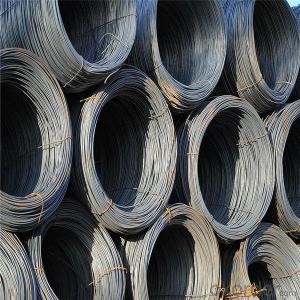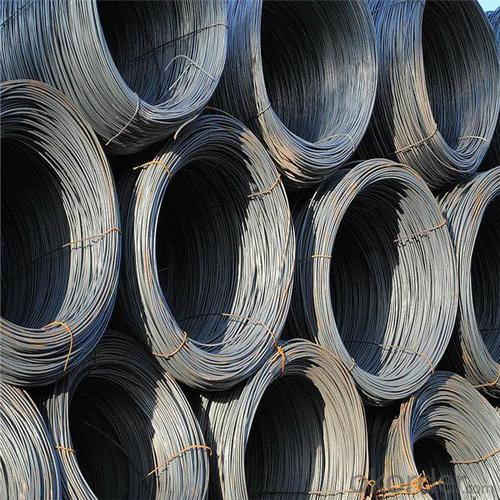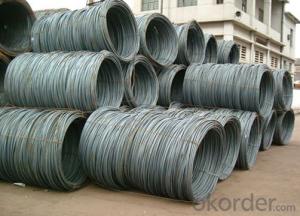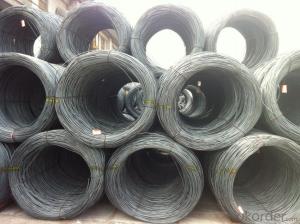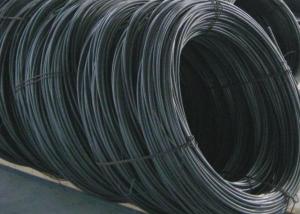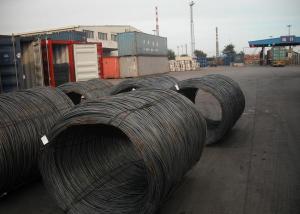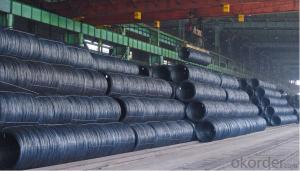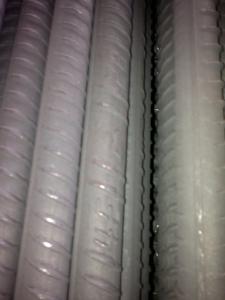Steel Wire Rod hot Rolled in hight carbon
- Loading Port:
- China main port
- Payment Terms:
- TT OR LC
- Min Order Qty:
- 100 m.t.
- Supply Capability:
- 12767 m.t./month
OKorder Service Pledge
OKorder Financial Service
You Might Also Like
Specification
Wire rod is used for many different products. Depending upon how it is cold formed and heat treated,
wire is used, for example, to produce not only wire ropes, barbed wire, wire mesh and nails, but also
springs, welded wire mesh and reinforcement wire.
Our Advantage: High quality steel products from 1 class mills in
Reasonable price
Professionalism of the products
On-time delivery
Complete documents and certificates
Sincere service to meet our clients' requirements
Product Description :
Standard | AISI, ASTM, BS, DIN, GB, JIS |
Material/steel grade | Q195-Q235,SAE1006B,SAE1006CR, SAE1008B, SAE1008CR, SAE1010B, SAE1018B, or according to customers requirements |
Wire Gauge | 5.5-12mm |
Coil weight | 1.8-2.1mts |
MOQ | 25MT |
Delivery Time | 15-30 days after receipt of L/C or deposit by T/T |
Packing | In coil and load in container, if large quantity, by bulk vessel; Can be packed as customers' special requirements |
Payment terms | 1).100% irrevocable L/C at sight. 2).30% T/T prepaid and the balance against the copy of B/L. 3).30% T/T prepaid and the balance against L/C |
Application | widely used in machinery parts, manufacturing industry, electronics industry, metal tools and others |
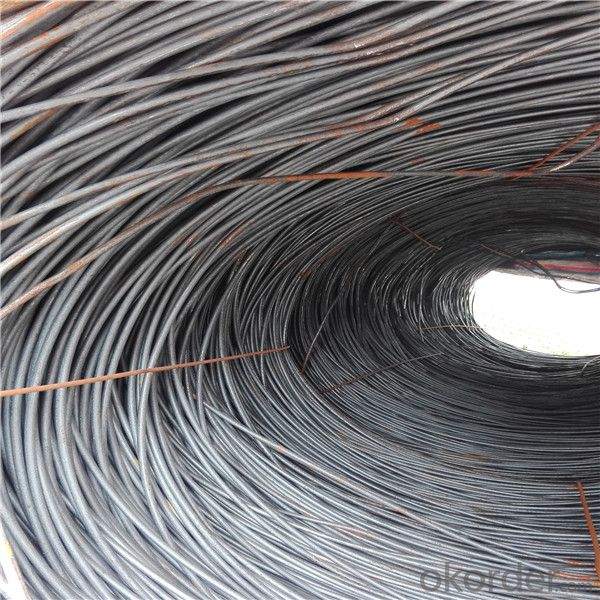
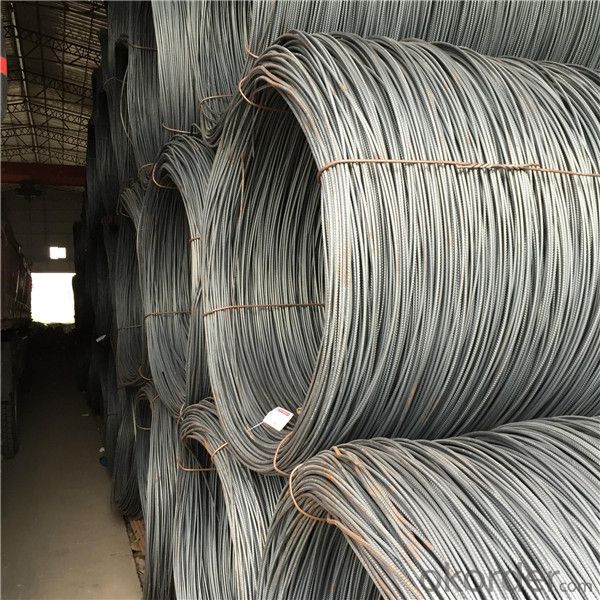
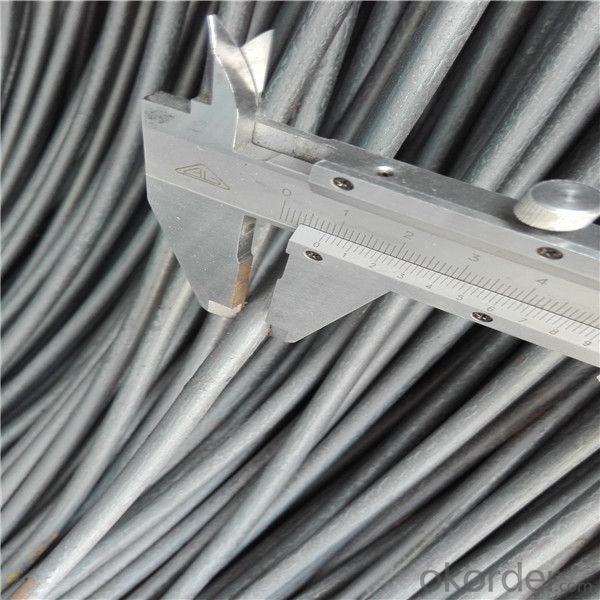
Application :
It generally used in braiding the hose for bathing product and machinery. With it
good flexibility, resistant to high temperature and resistant to corrosion, it
used widely in many industries.
Packing :
Hot-rolled wire rod is held in a unit with at least four steel straps in the
transverse direction and transported and stored without further packaging.
Before
the steel strapping is applied, the wire rod must be sufficiently compressed.
The strapping is fixed in the transverse direction with a single circumferential
strap so that the strapping does not slip and cause the coil to come apart.
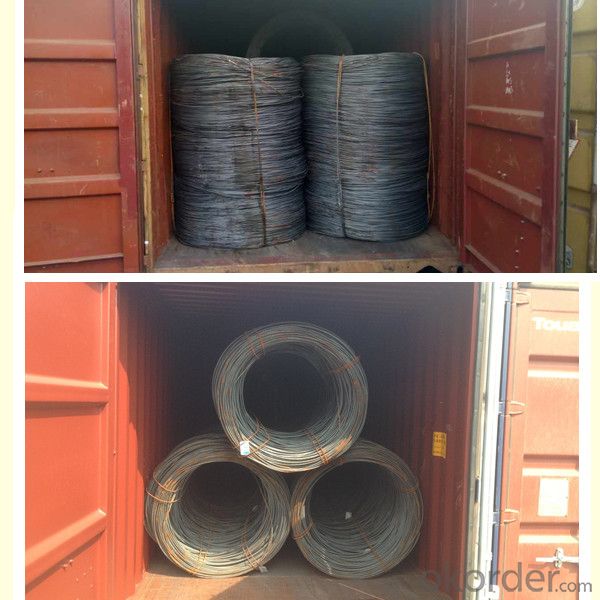
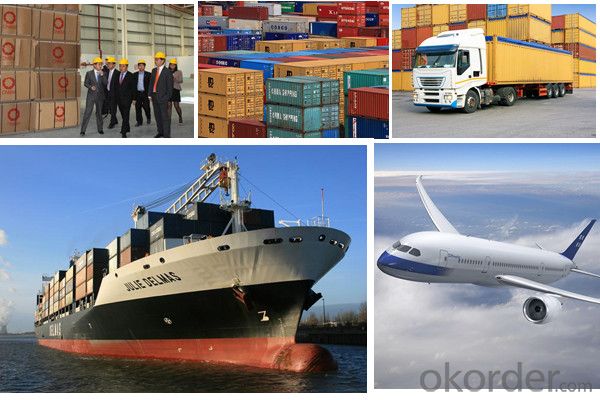
Our service:
(1) We cooperate with famous factories with advanced equipment and well trained workers.
(2) We can provide factory price with trading company service.
(3) We continuously work on the improvement of our processes, guaranteeing
consistently high standards of quality to keep none compensation.
(4) We guarantee 24 hours response and 48 hours solution providing service.
(5) We accept small order quantity before formal cooperation.
(6) We deliver the agreed quality at the agreed time, reacting to changes in
customer wishes in a flexible way.
(7) Due to our volume and selling power, we have excellent freight rates with
shipping lines.
(8) We strive to always be fair and honest in our dealings with customers.
(9) We strive to work together with customers to achieve much more than we can
achieve alone.
(10) Through our passion and commitment we aim to be a market leader in all our
key markets. To maintain our position as market leader we must continue to add
value in all that we do.
FAQ:
1.Q: What's your MOQ(minimum order quantity)?
A: One full container, mixed acceptable .
2. Q: What's your packing methods?
A: Packed in bundle or bulk ..
3. Q: How can I buy CNBM products in my country?
A:Please send us an inquiry or email ,we will reply to you if there is distributor in your country
4. Q: Can we visit your factory?
A: Warmly welcome. Once we have your schedule, we will arrange the
professional sales team to follow up your case.
5. Q: How long does it take to get the product if i place an order?
A:With the process of your requirements,we will pack and deliver in 3
-7 days. If it is by sea shipment,it will take 15-45 days depending on different locations
- Q: What are the different types of tests performed on steel wire rod?
- To ensure the quality and suitability of steel wire rod for different applications, various tests are conducted. These tests encompass: 1. Analysis of Chemical Composition: This examination determines the presence and proportion of different elements in the steel wire rod, such as carbon, manganese, silicon, sulfur, phosphorus, and other trace elements. Its purpose is to verify that the steel meets the required specifications. 2. Tensile Strength Evaluation: This evaluation measures the steel wire rod's capacity to endure tension or pulling forces without fracturing. It identifies the maximum load the rod can withstand before it breaks, providing crucial data about its strength and durability. 3. Elongation Assessment: This assessment determines the increase in length, as a percentage, that the steel wire rod experiences before it breaks under tension. It helps assess the rod's ductility and malleability, indicating its ability to endure deformation without fracturing. 4. Hardness Examination: This examination gauges the steel wire rod's resistance to indentation or scratching. It offers insights into the material's strength and ability to withstand wear and tear. 5. Microstructure Analysis: This analysis involves scrutinizing the microstructure of the steel wire rod under a microscope. Its purpose is to identify any structural irregularities, such as grain size, presence of inclusions, and uniformity, which can impact the rod's mechanical properties. 6. Surface Inspection: This inspection entails visually examining the surface of the steel wire rod for any defects, such as cracks, scratches, or irregularities. It guarantees that the rod complies with the required visual quality standards. 7. Dimensional Verification: This verification confirms the accuracy and tolerances of the steel wire rod's dimensions, such as diameter, length, and straightness. It ensures that the rod meets the specified dimensional requirements for its intended application. 8. Corrosion Resistance Assessment: This assessment evaluates the steel wire rod's ability to resist corrosion when exposed to different environmental conditions. It assists in determining the rod's suitability for applications where corrosion resistance is crucial. By conducting these tests, manufacturers can ensure that the steel wire rod adheres to the necessary quality standards and is appropriate for use in a range of industries, including construction, automotive, manufacturing, and infrastructure.
- Q: What are the different toughness testing methods for steel wire rod?
- There are several different toughness testing methods that can be used to assess the strength and durability of steel wire rods. Some of the commonly employed techniques are: 1. Charpy Impact Test: This method involves striking a notched specimen with a pendulum hammer and measuring the energy absorbed during fracture. It provides an indication of the material's resistance to impact loading and can be used to evaluate the ductile-to-brittle transition temperature. 2. Izod Impact Test: Similar to the Charpy test, the Izod method measures the energy absorbed by a notched specimen when struck by a swinging pendulum. This test is particularly useful for assessing the toughness of materials with low impact resistance. 3. Tensile Testing: This method involves subjecting a wire rod to a gradually increasing tensile force until it fractures. By measuring the maximum force applied and the elongation at fracture, the tensile strength and ductility of the steel can be determined. Although tensile testing does not directly measure toughness, it provides valuable information about the material's mechanical properties. 4. Bend Test: In this test, a steel wire rod is bent to a specified angle and inspected for signs of cracking or fracture. The ability of the material to withstand bending without failure is indicative of its toughness and ductility. 5. Hardness Testing: Hardness tests, such as the Rockwell or Brinell test, measure the resistance of a material to indentation. Although hardness is not a direct measure of toughness, it can provide an indication of the material's strength and ability to resist deformation. 6. Fracture Toughness Testing: This method involves measuring the critical stress intensity factor (KIC) or fracture toughness of a material. It provides information about how the material will behave under stress, including its resistance to crack propagation. Overall, these toughness testing methods help in evaluating the performance and suitability of steel wire rods for various applications, such as construction, manufacturing, and engineering. The choice of testing method depends on the specific requirements and characteristics of the material being assessed.
- Q: What are the different surface inspection methods for steel wire rod?
- Steel wire rod can undergo a variety of surface inspection methods to ensure its quality and integrity. 1. The simplest and most basic method is visual inspection, where the surface is visually examined for visible defects like scratches, dents, or corrosion. 2. Another method is magnetic particle inspection, which involves applying a magnetic field and magnetic particles to the surface. Any defects or cracks cause the particles to cluster and become visible under UV light. 3. Eddy current testing is a non-destructive method that induces an electric current in the wire rod and measures the resulting electromagnetic field. Variations in the field can indicate surface defects. 4. Ultrasonic testing uses high-frequency sound waves to penetrate the surface. Defects or cracks reflect the sound waves, allowing for detection. 5. Dye penetrant inspection applies a liquid dye to the surface, which seeps into defects or cracks. After removing excess dye and applying a developer, the defects become visible. 6. Laser scanning is an advanced method that scans the surface using laser technology. It detects deviations from the normal surface profile and provides a detailed analysis. 7. X-ray inspection is used to inspect the internal and external surface of the wire rod. X-rays pass through the rod, and defects are detected by variations in the X-ray beam's intensity. Each method has its own advantages and limitations. The choice depends on specific requirements, the type of defects to be detected, and the desired level of accuracy.
- Q: How is steel wire rod used in the manufacturing of wire forms for fire protection systems?
- The production of wire forms for fire protection systems heavily relies on steel wire rod. These wire forms serve various purposes in fire protection applications, including sprinkler systems, fire extinguishers, and fire alarm systems. To begin with, steel wire rod is essential for creating wire mesh, which is commonly used to reinforce fire-resistant materials. This wire mesh is incorporated into panels, curtains, or barriers to provide additional strength and stability, effectively containing fires within designated areas. Moreover, steel wire rod is utilized in manufacturing the wires used in fire sprinkler systems. These wires are bent and shaped into specific forms, such as U-shapes or loops, and are then attached to sprinkler heads. The wire forms act as a support system, securely holding the sprinkler heads in place and ensuring their proper positioning for effective water discharge when triggered by heat or smoke. Furthermore, steel wire rod is also employed in the production of wire forms for fire extinguishers. These wire forms are bent and formed into brackets or handles, securely holding the extinguisher cylinder. By using these wire forms, fire extinguishers become easily accessible and can be quickly grabbed during emergency situations. Lastly, steel wire rod is used in manufacturing wire forms for fire alarm systems. These wire forms are shaped into brackets or clips, which securely hold fire alarm devices, such as smoke detectors or heat sensors, in place. This ensures that the alarm devices are accurately positioned to detect potential fire hazards and promptly alert occupants. In conclusion, the utilization of steel wire rod is vital in the manufacturing process of wire forms for fire protection systems. It enables the production of wire mesh, wires for sprinkler systems, brackets for fire extinguishers, and clips for fire alarm systems. By incorporating steel wire rod, fire protection systems are enhanced, ultimately ensuring the safety of individuals and property during fire emergencies.
- Q: What are the major trends in the steel wire rod industry?
- The steel wire rod industry is currently being shaped by several significant trends. Firstly, there is a growing demand for steel wire rods across various industries such as construction, automotive, and manufacturing. This increased demand can be attributed to factors like population growth, urbanization, and global infrastructure development. Secondly, there are notable technological advancements taking place within the industry. These innovations aim to improve manufacturing processes, enhance wire rod quality, and reduce production costs. Automation, robotics, and data analytics are among the key technological trends that are revolutionizing the industry. Additionally, there is a shift towards more sustainable practices in the steel wire rod industry due to increasing environmental concerns. Companies are adopting energy-efficient technologies, reducing emissions, and implementing recycling programs to minimize their environmental impact. This trend is driven by both regulatory requirements and the industry's commitment to sustainability. Furthermore, the industry is experiencing market consolidation, as larger companies acquire smaller players and form strategic partnerships. This consolidation is driven by the need to optimize production capacities, expand global reach, and achieve economies of scale. Mergers and acquisitions are reshaping the competitive landscape of the industry. Lastly, steel wire rod manufacturers are increasingly focusing on product diversification to remain competitive. They are developing a wide range of wire rod products with varying specifications to cater to the diverse needs of different industries. Customization and flexibility in manufacturing are becoming crucial factors for success in the industry. Overall, these trends in the steel wire rod industry are driving it towards a more efficient, sustainable, and customer-centric future.
- Q: How is steel wire rod stored in a warehouse or distribution center?
- To ensure convenient access, safety, and damage prevention, steel wire rod is typically stored in a warehouse or distribution center in a well-ordered manner. It is common practice to store the wire rod in long, cylindrical bundles or coils, the size and weight of which vary based on specific requirements. In order to store the steel wire rod, the warehouse or distribution center employs a combination of racks, shelves, or specially designed storage systems. These storage systems are tailored to accommodate the weight and dimensions of the wire rod bundles or coils, ensuring stability and mitigating potential hazards. In certain instances, wire rods are stacked vertically on racks or shelves, with each bundle or coil placed on top of the other. This vertical storage method optimizes space utilization and facilitates the identification of different types or sizes of wire rod. Alternatively, wire rod may also be stored horizontally on racks or shelves. This approach is frequently employed when the wire rods are too heavy or lengthy to be stored vertically. Horizontal storage facilitates easier handling and guards against deformation or damage to the wire rod. Regardless of the chosen storage method, it is imperative to maintain a dry and well-ventilated environment to prevent corrosion of the steel wire rod. Additionally, proper labeling and documentation play a crucial role in efficiently identifying and tracking the wire rod inventory. Overall, the storage of steel wire rod in a warehouse or distribution center necessitates meticulous planning and organization to ensure efficiency, safety, and the preservation of the wire rod's quality.
- Q: What are the main factors affecting the market advertising of steel wire rod?
- The main factors affecting the market advertising of steel wire rod include the demand and consumption patterns of industries that utilize steel wire rod, the overall economic conditions and growth rate of the construction and manufacturing sectors, the competitive landscape and pricing strategies of steel wire rod manufacturers, technological advancements and product innovation in the industry, government regulations and policies related to steel production and trade, and the effectiveness of marketing and advertising campaigns in reaching and influencing the target audience.
- Q: How is steel wire rod used in the manufacturing of wire ties for construction sites?
- Steel wire rod is used in the manufacturing of wire ties for construction sites by being drawn through a series of dies to reduce its diameter and increase its length. This process results in a strong and durable wire that is then cut into the desired lengths and bent into the shape of wire ties. These wire ties are widely used in construction sites to secure and hold together various building materials, such as rebar, pipes, or electrical wires, ensuring structural stability and safety.
- Q: How is steel wire rod used in the manufacturing of springs?
- Steel wire rod is used in the manufacturing of springs as it serves as the primary material for creating the spring's core structure. The wire rod is further processed through various techniques such as cold drawing, coiling, and heat treatment to ensure the desired strength, elasticity, and durability of the spring. This high-quality steel wire rod enables springs to withstand repetitive loading and provide the necessary resistance and flexibility required in various applications, ranging from automotive suspensions to mattresses and industrial machinery.
- Q: What are the common applications of cold drawn steel wire rod?
- Due to its unique properties and characteristics, cold drawn steel wire rod is commonly utilized in a variety of applications. These applications include: 1. Manufacturing wire products: Cold drawn steel wire rod is extensively employed in the production of various wire products, such as nails, screws, springs, cables, and wire mesh. The process of cold drawing enhances the wire's strength, ductility, and surface finish, making it ideal for these purposes. 2. Automotive industry: Cold drawn steel wire rod is widely used in the automotive sector for manufacturing parts like suspension springs, seat springs, engine valve springs, and drive shafts. The high strength and excellent fatigue resistance of cold drawn steel wire make it suitable for these crucial components. 3. Construction sector: In the construction industry, cold drawn steel wire rod is employed for reinforcing concrete structures. The wire is commonly used as welded wire mesh or individual reinforcement bars. The cold drawing process improves the wire's tensile strength, allowing it to withstand high loads and provide structural stability. 4. Electrical industry: The electrical industry utilizes cold drawn steel wire rod for producing electric cables, power transmission cables, and magnet wire. The wire's exceptional electrical conductivity and mechanical properties make it well-suited for these applications. 5. Manufacturing equipment: Cold drawn steel wire rod is used in the production of various equipment, including machinery, tools, and equipment components. The wire's high strength, dimensional accuracy, and surface finish make it suitable for manufacturing precise and reliable components. 6. Furniture manufacturing: Within the furniture industry, cold drawn steel wire rod is commonly employed for manufacturing springs used in mattresses, sofas, and chairs. The wire's excellent resilience and durability are vital for providing comfort and longevity to furniture products. 7. Agriculture sector: In the agriculture sector, cold drawn steel wire rod is extensively used for fencing, vineyard trellises, and animal enclosures. The wire's strength, corrosion resistance, and flexibility make it suitable for withstanding outdoor exposure and providing long-lasting support. In conclusion, the exceptional properties of cold drawn steel wire rod make it widely applicable in various industries. It finds usage in wire products manufacturing, the automotive industry, the construction sector, the electrical industry, manufacturing equipment, furniture manufacturing, and the agriculture sector.
Send your message to us
Steel Wire Rod hot Rolled in hight carbon
- Loading Port:
- China main port
- Payment Terms:
- TT OR LC
- Min Order Qty:
- 100 m.t.
- Supply Capability:
- 12767 m.t./month
OKorder Service Pledge
OKorder Financial Service
Similar products
Hot products
Hot Searches
Related keywords
